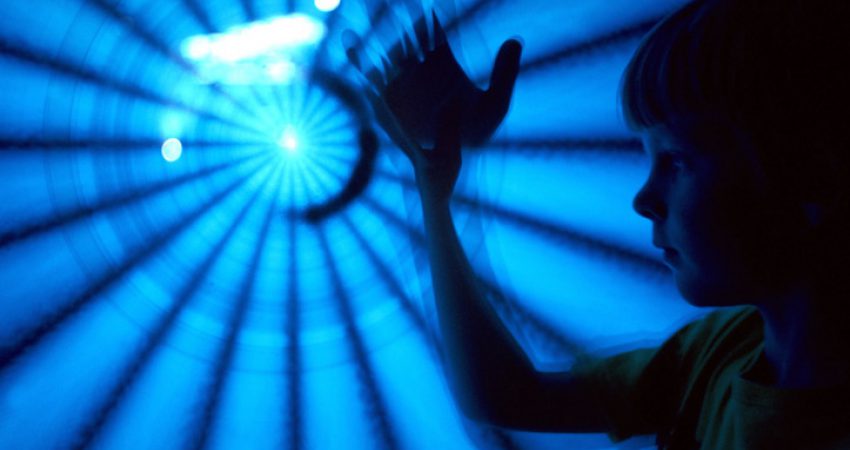
By Melissa Ballard and Sophie Papavizas - November 2015
PAPER CITATION
Aschbacher, P. R., Ing, M., & Tsai, S. M. (2014). Is science me? Exploring middle school students’ STE-M career aspirations. Journal of Science Education and Technology, 23(6), 735–743. doi:10.1007/s10956-014-9504-x
In this study, Aschbacher, Ing, and Tsai examined the relationship between middle school students’ self-perceptions in science and their interest in careers in science, technology, engineering, and medicine (STE-M). The hyphen in STE-M calls attention to the inclusion of medicine and omission of math, as the longitudinal study on which this work was based did not address math careers.
Research Design
Using data from 493 students who participated in all three years of a larger longitudinal study (Aschbacher, Li, & Roth, 2010, Aschbacher, Ing, & Tsai, 2013; Ing, Aschbacher, & Tsai, 2014), the researchers looked at how students' beliefs in eighth grade about their science ability and about the value of science in their lives predicted their desire to pursue STE-M careers as measured in both eighth and ninth grade. Participants completed the “Is Science Me?” survey (Aschbacher, 2010) in both eighth and ninth grade. The sample used in the analyses was comprised of roughly a third of the students initially available for the longitudinal study; the remaining students were excluded from this study for a variety of reasons, e.g. missing parental permissions, absence during a survey period, etc. Students came from five public, paired middle and high schools in Southern California that were selected for their racial and socioeconomic diversity.
Research Findings
Based on their answers to the eighth grade survey items, students were divided into four groups:
- The “Science is not me” group, who believed they could not do science and did not see value in it, was the largest, at 57 percent of the students.
- The “Science is me” group felt that science is valuable and that they could do it. They represented just 12 percent of the students.
- The group “I value science but I don’t do it well” was 21 percent of the students.
- The “I can do science but I don’t value it” group represented 9 percent of the students.
The researchers found no relationship between science self-perceptions and gender or ethnicity. Students of low socioeconomic status were much more likely to be in the Science is not me group than were those of higher socioeconomic status.
Science self-perceptions in eighth grade were significantly related to STE-M career interest in both eighth and ninth grade, both interest overall and for each category, i.e., science, technology, engineering, and medicine). Among those in the Science is me category, 78 percent had a strong interest in a STE-M career in eighth grade, which decreased to 64 percent in ninth grade. TheScience is not me group was least likely to be interested in STE-M careers—40 percent of students in eighth grade indicated interest, which increased slightly to 46 percent in ninth grade. The other two groups were more variable between eighth and ninth grades, but in each grade, about half stated an interest in STE-M careers, although the students indicating interest were not necessarily the same from year to year. Among students in the Science is me group, 47% were interested in science, 36% in technology, 39% in engineering, and 44% in a medical career. For those in the Science is not me group, 8% were interested in science, 16% in technology, 11% in engineering, and 21% in medical careers. Thus, the small proportion of students who had strong self-perceptions in science and found it valuable, showed significantly higher levels of interest in STE-M careers.
Theoretical Basis
Based on expectancy-value theory, the authors posit that in order to understand students’ career aspirations in STE-M, we need to know if students believe they can be successful and if they value STE-M learning and STE-M careers. Expectancy-Value theory holds that in order to explain people’s motivation in relation to a task, we need to know both whether the individuals believe they will be successful in the task and the extent to which they value it.
Implications for Practice
As this study finds, students who believe they can learn science and view it as interesting, important and useful in their lives are far more likely to be interested in various STE-M careers, just at the time they are choosing their high school courses. Informal science educators can play a strong role in developing students’ confidence in their emerging STE-M knowledge and skills and helping them to perceive science as important and relevant to their lives. This is particularly true for students in high-poverty households, which the study showed are less likely to hold these beliefs.
References
Aschbacher, P. R., Ing, M., & Tsai, S. (2013). Boosting student interest in science. Phi Delta Kappan, 95(2), 47–51.
Aschbacher, P. R., Li, E., & Roth, E. J. (2010). Is science me? High school students’ identities, participation and aspirations in science, engineering, and medicine. Journal of Research in Science Teaching, 47(5), 564-582.
Ing, M., Aschbacher, P., & Tsai, S. M. (2014). Gender differences in the consistency of middle school students’ interest in engineering and science careers. ,Journal of Pre-College Engineering Education Research, 4(2), 1-10.
Tan, E., Calabrese Barton, A., Kang, H., & O’Neill, T. (2013). Desiring a career in STEM-related fields: How middle school girls articulate and negotiate identities-in-practice in science. Journal of Research in Science Teaching, 50(10), 1143–1179.




